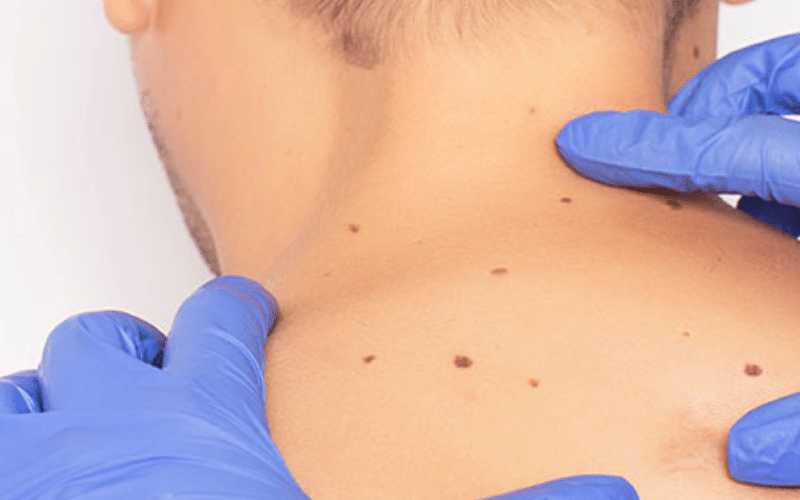Are you familiar with Mohs Surgery? This highly specialized surgical technique is used to treat skin cancer and has been gaining popularity in recent years. Despite its effectiveness, there are still many myths and misconceptions surrounding this procedure that can cause confusion and anxiety for patients. In this blog post, we will be debunking some of the most common myths associated with Mohs Surgery so that you can have a better understanding of what it entails and how it could benefit you or your loved ones. Get ready to learn more about this life-saving surgery!
What is Mohs Surgery?
Mohs Surgery is a specialized surgical procedure used to treat skin cancer that has a high cure rate. This technique was developed by Dr. Frederic E. Mohs in the 1930s and has since become one of the most effective treatments for non-melanoma skin cancers.
Unlike traditional surgery, Mohs Surgery involves removing thin layers of cancerous tissue and examining them under a microscope to ensure that all cancer cells have been removed before closing the wound. This process is repeated until all cancer cells are gone.
This precision-oriented approach allows for minimal removal of healthy tissue, which helps preserve the function and appearance of surrounding areas. It is particularly useful in treating tumors on sensitive parts of the body like eyelids, lips, nose, ears, or genitals as it spares much healthy tissue compared with conventional methods.
The procedure can be performed under local anesthesia on an outpatient basis without requiring hospitalization making it more convenient than other types of surgeries. In addition to its high success rate and low morbidity risk profile (low likelihood of complications), Mohs Surgery also offers excellent cosmetic outcomes when performed by experienced surgeons.
If you’ve been diagnosed with skin cancer or suspect you have one; consider discussing Mohs Surgery with your dermatologist as it could be an appropriate treatment option for you!
What are the Different Types of Mohs Surgery?
There are three different types of Mohs surgery that can be used to remove skin cancer: standard, mapping, and immunostaining. The type of Mohs surgery chosen will depend on the size and location of the skin cancer.
Standard Mohs surgery involves removing a thin layer of tissue from the area around the skin cancer. This layer is then examined under a microscope to see if there are any remaining cancer cells. If there are, another layer is removed and examined until all the cells have been removed.
Mapping Mohs surgery involves creating a map or diagram of the area around the skin cancer before any tissue is removed. This allows for more precise removal of tissue during surgery.
Immunostaining Mohs surgery uses special dyes to identify cancer cells in tissue samples taken during surgery. This helps ensure that all cancerous cells are removed during the procedure.
Each type of Mohs surgery has its own advantages depending on individual circumstances and should be discussed with your doctor to determine which one would be most appropriate for you.
How Does Mohs Surgery Work?
Mohs surgery is a highly effective surgical technique used to treat skin cancer. This procedure involves the removal of cancerous tissue layer by layer while leaving healthy tissue intact.
The process begins with local anesthesia being administered to numb the area around the tumor. The surgeon then uses a scalpel to remove the visible portion of the tumor and a thin layer of surrounding skin.
This removed tissue is immediately examined under a microscope for any signs of remaining cancer cells. If there are still cancer cells present, another layer will be removed and examined until all traces of cancer have been eliminated.
This precise and meticulous process allows for maximum preservation of healthy tissue and ensures that all cancerous cells are thoroughly removed from the affected area.
Once all layers have been cleared and no more cancer is detected, reconstruction can begin on any areas where significant amounts of skin were removed during Mohs surgery. Mohs surgery provides patients with an extremely high cure rate while minimizing damage to surrounding healthy tissue.
What to Expect After Mohs Surgery
After Mohs surgery, patients can expect some degree of discomfort and swelling. Dressings will be applied to the surgical site, and they will need to be changed regularly for up to several days after the procedure. Patients may also experience bruising or discoloration around the incision.
It is important to follow post-operative instructions carefully in order to prevent complications such as infection. The surgeon will provide specific guidelines on wound care, which may include keeping the area dry, avoiding certain activities that might put pressure on the incision site and taking pain medication as needed.
Most patients are able to return home on the same day of their procedure but should plan on resting for several days afterward. They should avoid strenuous activity until cleared by their doctor.
Follow-up appointments with your physician are crucial after Mohs surgery; these visits allow your surgeon to assess how you’re healing and ensure no further treatment is needed. It’s essential that you attend all follow-up appointments recommended by your medical team.
Myths and Misconceptions About Mohs Surgery
Myth 1: Mohs Surgery is Painful:
Many people believe that Mohs surgery is a painful procedure, but this couldn’t be further from the truth. The procedure is performed under local anesthesia and most patients experience little to no pain during the process. Patients may feel some discomfort or mild stinging, but it’s usually short-lived.
Myth 2: Mohs Surgery Leaves a Large Scar
Another common misconception about Mohs surgery is that it leaves behind large scars. However, because of its precision technique which removes only cancerous tissue while leaving healthy tissue intact, scarring can be minimized as much as possible.
Myth 3: Only Certain Types of Skin Cancer Are Treated with Mohs Surgery
Mohs surgery isn’t just for treating a specific type of skin cancer; rather, it’s effective for all types of skin cancers including basal cell carcinoma and squamous cell carcinoma. It’s also a preferred treatment option for those with aggressive or recurrent tumors.
Myth 4: You Can’t Wear Makeup After Your Procedure
Patients may think they need to take time off work or avoid social engagements after their surgery due to visible scarring and discoloration on the treated area. But in reality, makeup can be applied over your wound within one-week post-operation once scabbing has occurred and healing has begun.
Myth 5: Any Dermatologist Can Perform Mohs Surgery
This myth leads many patients to choose an inexperienced dermatologist who lacks proper certification training in performing moh’s surgeries resulting in poor outcomes such as incomplete excision leading to recurrence & extensive reconstruction procedures increasing morbidity & treatment costs.
Mohs surgery is a highly effective treatment for skin cancer that offers patients the best chance of complete removal while preserving as much healthy tissue as possible. It’s important to debunk the myths and misconceptions surrounding this procedure so that patients can make informed decisions about their healthcare options.
By understanding what Mohs surgery is, how it works, and what to expect during and after the procedure, patients can approach treatment with confidence. If you have been diagnosed with skin cancer or suspect you may have it, talk to your dermatologist about whether Mohs surgery is right for you. With proper care and follow-up appointments, most patients go on to live long and healthy lives free from skin cancer.

